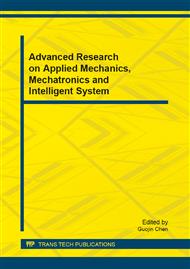[1]
S.C. Fok, Internet-enabled exercises and prosthesis for home-based cognitive rehabilitation, International Journal of Biomedical Engineering and Technology 2 (2009) 29-43.
DOI: 10.1504/ijbet.2009.021906
Google Scholar
[2]
E.L. Glisky, D.L. Schacter, E. Tulving, Learning and retention of computer-related vocabulary in amnesic patients: method of vanishing cues, Journal of Clinical and Experimental Neuropsychology. 8 (1986) 292-312.
DOI: 10.1080/01688638608401320
Google Scholar
[3]
E.L. Glisky, D.L., Schacter, M.A. Butters, Domain-specific learning and remediation of memory disorders, in M.J. Riddoch, G.W. Humphreys (Eds), Cognitive Neuropsychology and Cognitive Rehabilitation, Lawrence Erlbaum, U.K., 1994, pp.527-548.
Google Scholar
[4]
E.L. Glisky, Memory rehabilitation in the elderly, in D.T. Stuss, G. Winocur, I.H. Robertson (Eds), Cognitive Neurorehabilitation, Cambridge University Press, U.K., 2001, pp.347-361.
Google Scholar
[5]
V. Popescu, G.C. Burdea, M. Bouzit, V.R. Hentz, A virtual-reality-based telerehabilitation system with force feedback, IEEE Transactions on Information Technology in Biomedicine 4 (2000) 45-51.
DOI: 10.1109/4233.826858
Google Scholar
[6]
L.A. Zadeh, L.A., Outline of a New Approach to the Analysis of Complex Systems and Decision Processes, IEEE Transactions on Systems, Man, and Cybernetics SMC-2 (1973) 28-44.
DOI: 10.1109/tsmc.1973.5408575
Google Scholar
[7]
H.M. Hodkinson, Evaluation of a mental test score for assessment of mental impairment in the elderly, Age Ageing 1 (1972) 233-238.
DOI: 10.1093/ageing/1.4.233
Google Scholar


